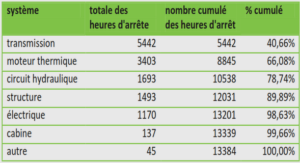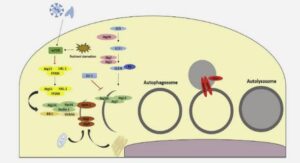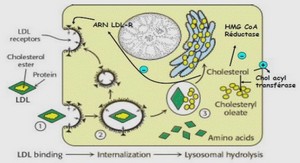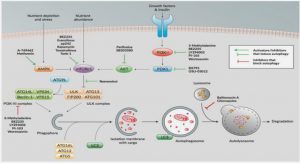Effects of environmental variables on the saproxylic community
Canonical redundancy analyses (RDA) were used to assess the effects of environmental variables on the ordination of the saproxylic community. Analyses were performed separately on the xylophagous, mycophagous and predaceous functional groups as these may be significantly associated with different sets of environmental variables. Several saproxylic species are known for their non-linear response to fire severity; such effects were thus assessed by adding a polynomial term in analyses (Jones et al. 2008). Because representing the polynomial term of a given variable may result in strong distortion of the ordination space, plot-Ievel and nearby fire severity was expressed using dummy variables (Firel and Firel_250: <2.5; Fire2 and Fire2_250m = 2.5-3.5) in ordination. Significant (P<0.05) variables of each type were assessed by forward selection after 9999 unconstrained Monte Carlo permutations. In order to downweight rarely caught species in the analyses, singletons were excluded and abundance of species were Hellinger-transformed (Legendre and Gallagher 2001). The proportion of the variation in species assemblages of each saproxylic functional group explained by each combinations of set of variables (Table 1.1) was assessed by variation partitioning (Borcard et al. 1992).
First, the significant variables belonging to each of the four sets of variables were identified as above by means of forward selection in separate RDA. This procedure was applied separately for each functional group. In contrast to the graphical representation of RDA, partitioning analyses were performed using local and nearby fire severity as a continuous variable and by including their respective quadratic term. Variation partitioning was then performed with these significant variables to assess the importance of variation explained by each set as well as the one shared between one or several sets. The independent explained variance of a given set was estimated separately from the variation explained without considering confounding effects of other sets (marginal effect sensu Cushman and McGarigal 2002). Significance of testable partitions was evaluated by 999 Monte Carlo permutations under the reduced model. The proportion (R2Ylxadj) of variance explained was adjusted for the number of variables (P) and sampling effort (n) (Peres-Neto et al. 2006).
Effect of bumed habitat quality
Saproxylic functional groups appeared to be mainly driven by the quality of the burned habitat measured at the plot scale suggesting that environmental control can act at a relatively fine scale. Saproxylic species may respond to habitat characteristics measured at spatial scales up to few hundreds or thousands metres (Boulanger et al., submitted; Holland et al. 2004; 0kland et al. 1996). However, this study suggests that the influence of the bumed habitat at the nearby scale (250 m) was less important than at the plot scale. High dispersal capacities probably allowed most colonizers to reach and resolve fine-grained habitats. Nevertheless, this does not ruled out the potential effects of other habitat characteristics measured at coarser spatial scales than those assessed in the present study (Boulanger et al., submitted). Among plot-scale attributes, fire severity was the most important one for predicting early post-fire saproxylic species abundance. Saproxylic communities were clearly different along the whole fire severity gradient.
Effect of fire severity on saproxylic species is relatively well-known for several xylophagous species but less so for other functional groups. Attraction of M s. scutellatus, A. p. proteus and phloem feeders, including scolytids, to moderately-lightly bumed stands was already noticed in previous studies (Cerezke 1977; Saint-Germain et al. 2004b, 2004c). Black spruce has a thin bark and its insulating property may be affected by fire severity that may reduce moisture content. Consequently, lightly bumed trees are less likely to experience extreme temperatures and may keep higher moisture content in the subcortical area where these beetles are actively feeding (Fumiss 1965; Peddle et al. 2002; Savely 1939). Negative effect of fire severity on the inner bark moisture content may also explain the lower abundance of mycophagous species, including the most common ascomycete feeders, in severely bumed stands. Depleted moisture content in severely bumed trees may affect the subsequent ascomycete colonization success (Boddy and Rayner 1988; Harmon et al. 1986).
The positive effect of fire severity on predaceous species is surprising. Many predators, including T. undatu/us nubilus and S. virescens, were more common in severely bumed patches where associated preys (e.g. bark beetles) are nonetheless much less common. Likewise, many xylophagous species were actually more ab und a nt as distance to unbumed forests increases, that is where severely bumed stands were more likely to occur. Furthermore, although it was favoured by moderate fire severity at the plot-scale, A. p. proteus was more abundant away from the 2002 fires , i.e. in the northem and more severely bumed area. As a result, several xylophagous species actually oriented themselves towards areas which appear as suboptimal considering their reproduction requirements, larvae being more abundant in lightly or moderately bumed trees (Saint- Germain et al. 2004b, 2004c, Boulanger et al., submitted). It should be noticed that, since sampling was performed very soon after fire, individuals were actively dispersing and as such, they may not automatically be considered as « true » colonists. Consequently, their abundance in bumed sites may not necessarily reflect the subsequent use of the substrate (Boulanger et al. , submitted). Species may have therefore orient themselves to areas where volatiles were more abundant despite of being first attracted to the optimal habitat (Boulanger et al., submitted).
Such higher amount of volatiles may occur in severely burned areas (Kelsey and Joseph 1999, 2003) or away from unburned habitats. Yet, such pattern is not consistent for aIl functional groups. While predaceous and xylophagous beetles that are known to use volatiles as attractive cues followed this pattern, mycophagous species did not. Even though several authors (Fâldt et al. 1999; Guevera et al. 2000; Jonsell and Nordlander 1995; Jonsson et al. 1997) suggested that sorne mycophagous associated with bracket fungi may orient by using ho st volatiles or pheromones, no studies have assessed the role of post-fire volatiles in the dispersal of mycophagous species. Most saproxylic species were not positively influenced by the abundance of breeding substrates in bumed stands but many of them were more common in traps attached to larger diameter trees. Large trees may have been more attractive as larvae of these species are thought to benefit from physieal charaeteristies (higher moisture content and bark insulating properties, thicker phloem) of such trees (Saint-Germain et al. 2004b, 2004e). Even though the trunk-window trap is not recognized as a substrate-specific collecting method (Saint-Germain et al. 2006; Wikars et al. 2005), this result may refleet the importance of tree diameter as visual eues for landing decision (Campbell and Borden 2009).
Potential effect of dispersal from other habitats
The matrix of green forest is generally assumed to be the most important source of individuals for colonizing burned patches (Saint-Germain et al. 2008). Most species eaptured in our study may reproduce in or use de ad wood produced in unburned forest (Saint-Germain et al. 2007b). Emigration from these habitats is thus a likely phenomenon as many early eolonizers are known as opportunistic that may benefit from the « competition-free » environment provided by the recently burned patches (Holliday 1991). ln this study, distance to the green matrix did not have any detrimental effeet on the abundance of most saproxylic species. One may argue that dispersal from other habitats than the green matrix, e.g. other recent burns that ho st high volumes of freshly killed trees (Boulanger and Sirois 2006), may also affect the local abundance of saproxylic species after fire. Again, most predators and xylophagous species did not show any negative relation with the distance to recently burned stands, whereas mycophagous species, including the common Atomaria sp. and C. dentigera, showed the opposite.
Negative effect of distance to the green matrix may have been overlooked since these habitats were located much closer from plots (0 – 2.1 km) compared to the other recent fires (4.8 – 23.8 km). If one assumes that unburned forests or recently burned patches were a significant source of saproxylics, these results should be explained by the high dispersal capacities that allowed most early colonizers to reach any colonisable habitats within the burned patch. Yet, caution must be taken when assessing the relative importance of distance to other habitats as this group of variables was rather collinear with other burn’s attributes. For example, lightly burned habitats were more likely to be close to unbumed forests whereas habitats located farthest from the 2002 fires were also the most severely burned. In addition, other landscape characteristics not considered in this study (e.g. edge effect, landscape or patch complexity, etc.) may have affected the distribution patterns of saproxylic species (Boulanger et al., submitted; Holland et al. 2004; Wiens and Milne 1989).
AVANT-PROPOS |






